Exploring the Wings Sale Phenomenon in Kiteboarding
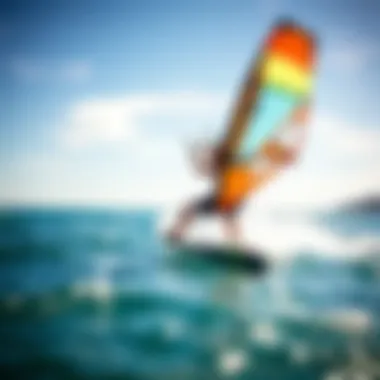
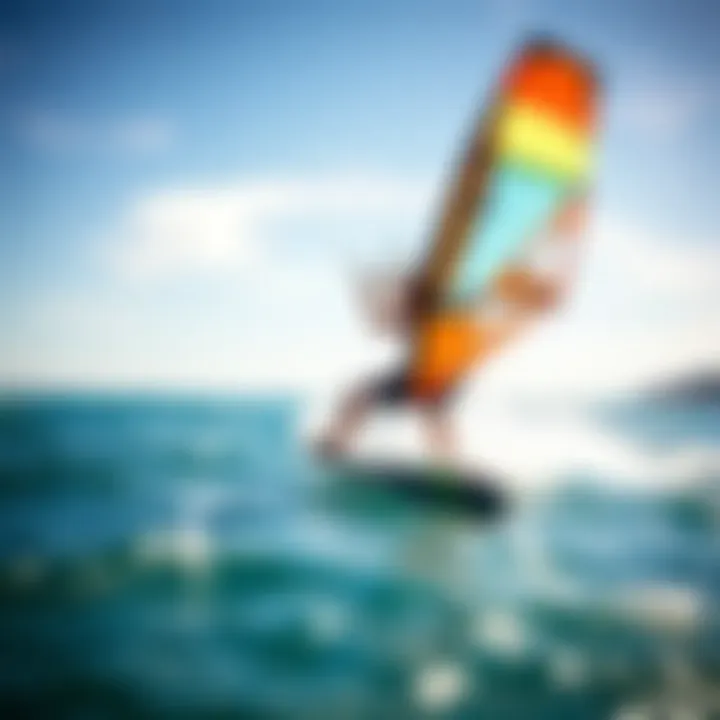
Intro
The kiteboarding scene is getting a fresh wind in its sails, thanks to the growing demand for wings. These innovations represent a leap in both accessibility and performance, making them a hot topic in the kiteboarding community. Wings are not just a way to catch the breeze; they have become a focal point for sales trends and consumer preferences. Understanding this phenomenon requires a deeper look into what choices enthusiasts face in gear selection, the techniques they need to master, and the evolving marketplace that shapes decisions.
As an enthusiast, the choices you face can feel as overwhelming as trying to navigate choppy waters on an early morning session. With countless options available, including different types of wings designed for various conditions and user experiences, it's essential to wade through the essentials and understand what suits your style best. This section aims to equip you, whether you are a seasoned professional or a budding kiteboarder, with insights that allow for informed decisions during your next gear purchase.
Through this exploration, we will shed light on the market trends related to wings, delve into the intricacies of gear selection, and provide techniques that not only enhance performance but also elevate your overall kiteboarding experience. With safety and environmental impacts becoming more critical than ever, all aspects of selecting wings and other related gear will be addressed, giving you a 360-degree view of this dynamic segment.
Get ready to glide through the nuances of wings in kiteboarding, where every detail counts in making the right choice.
Intro to Wings in Kiteboarding
In the vibrant world of kiteboarding, the emergence of wings is not merely a trend but a significant transformation in how enthusiasts and professionals alike approach this exhilarating sport. Wings bring a fresh perspective to the water, offering unique shapes, styles, and functionalities that cater to a diverse range of kiteboarders. In this section, we will dive into the essence of wings in kiteboarding, exploring their importance, benefits, and the various considerations that come into play for those stepping into this evolving domain.
Understanding the Role of Wings
Wings have rapidly carved out a niche within the kiteboarding community. Unlike traditional kites, which can often feel cumbersome or limiting to many riders, wings provide a liberating sensation. Here are some pivotal aspects that highlight the important role of wings:
- Versatile Performance: Wings are designed for versatility, accommodating various wind conditions and allowing riders to traverse water, land, or snow with ease.
- Decreased Bulk: Riders often find wings less cumbersome than their kite counterparts, making them accessible for those just starting their kiteboarding journey as well as experienced hands seeking a new thrill.
- Enhanced Control: The direct contact provided by wings allows for a more intuitive control system, meaning that even in challenging conditions, a rider can maintain stability and speed.
- Compactness for Travel: For the globetrotting kiteboarder, wings pack down smaller than traditional kites, making them easier to stow and transport.
In essence, wings offer not just a method of propulsion but an entirely new approach to the sport, influencing riding styles and techniques.
Wings vs. Traditional Kites
When discussing the differences between wings and traditional kites, it's essential to acknowledge that both have their unique merits. However, several determinants can influence a rider's decision on which to use:
- Lift and Stability: Traditional kites often provide ample lift but may lack the same stability that wings can offer, especially in rough waters.
- Wind Range: While traditional kites excel in specific wind ranges, wings tend to perform better across a broader spectrum, allowing for more extensive riding conditions.
- Learning Curve: Beginners might find wings more approachable, as the lack of complex lines and control systems simplifies the learning process.
- Physical Effort: Wings may require different physical demands from traditional kites, allowing for a different type of exertion while riding.
"Transitioning from a kite to a wing can feel like switching gears in a vehicle; it’s all about finding the sweet spot that resonates with your riding style."
As we explore the sales landscape of wings, understanding the differences helps enthusiasts make informed choices pertinent to their riding experiences and preferences.
Historical Context of Wings Sales
When diving into the wings sale phenomenon in kiteboarding, understanding the historical context is crucial. The journey of wing design and sales has significantly shaped not just the equipment but also how enthusiasts interact with the sport. It's essential to look back at how these wings evolved and how the market landscape changed over the years to better appreciate their impact on kiteboarding today.
Evolution of Wing Design
The evolution of wing design has played a pivotal role in the growth of kiteboarding. Early wings were often rudimentary, crafted from basic materials and lacking the sophisticated shapes we see now. Initially, the focus was primarily on functionality rather than performance, leading to wings that were fairly cumbersome. However, as technology advanced, the designs became more refined.
Key Milestones in Design:
- Materials: Initially made from traditional fabrics, designers began exploring lighter, stronger materials like ripstop nylon and polyester. This shift allowed for improved durability and performance.
- Shape and Size: The designs transformed from simple rectangular formations into complex shapes that could catch wind more effectively. These changes turned the wings into more versatile tools for riders.
- Floatation and Stability: Recent innovations introduced features like struts and leading-edge designs that enhance floatation and stability, allowing for better handling in varying wind conditions.
This journey from clunky designs to high-performance wings illustrates not just a technological advance but also a deepened understanding of aerodynamics. Today's wings are crafted not merely to fly but to glide seamlessly, allowing kiteboarders to experience the sport like never before.
Market Growth Over the Years
The market for wings has seen a dynamic rise, transforming kiteboarding into a mainstream water sport. There was a time when kiteboarding gear was exclusively for the adventurous few.
Factors Contributing to Market Growth:
- Rising Popularity: The past decade has seen an increase in interest from recreational riders to serious competitors, which fueled demand for better and more varied wings.
- Accessible Learning: With more instructors and schools emerging worldwide, entry into the sport has become easier for several new enthusiasts.
- Community and Events: Tournaments and social media platforms have played a significant role in cultivating a robust community. Enthusiasts share tips, tricks, and experiences online, further driving interest.
As the market burgeoned, brands recognized the need to cater to diverse rider needs, thus expanding their product lines. It's not just about one-size-fits-all anymore; now there are wings tailored for various skill levels, styles of riding, and environmental conditions.
"The history of wings in kiteboarding is more than just a timeline; it's a reflection of community growth and technological advancement."
For more information on kiteboarding history and innovations, you can check resources such as Wikipedia or Britannica for a deeper dive.
Current Landscape of Wings Sale
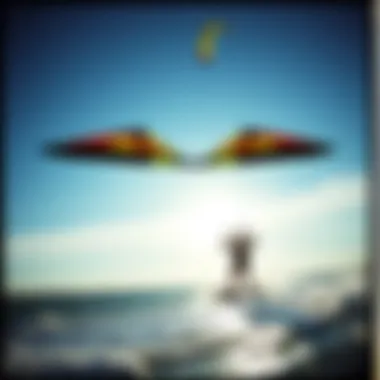
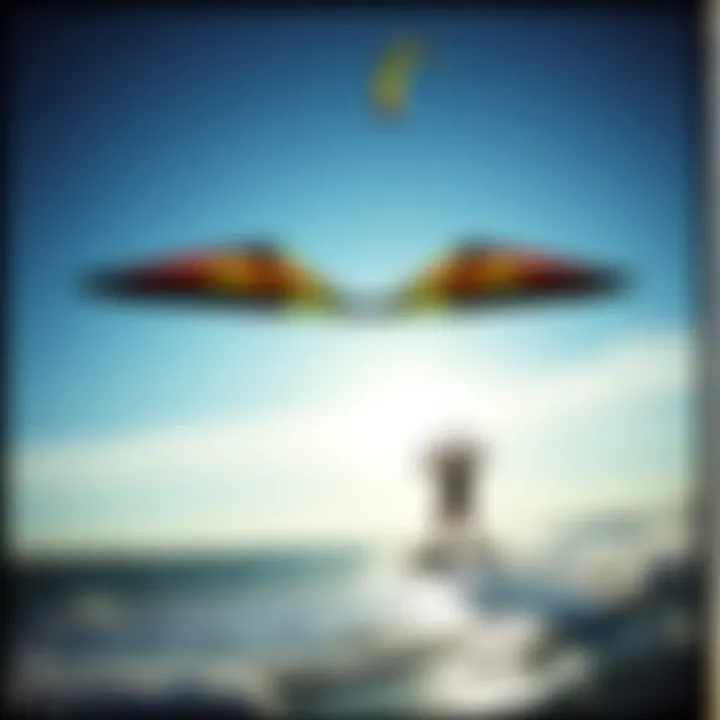
The current landscape of wings sale within kiteboarding is a mosaic of vibrant choices and emerging trends, reflecting the sport’s growth and evolution. Engaging with this topic is crucial for enthusiasts who wish to understand what shapes their options. The dynamic aspect of wings, combined with innovations in design and material, means that sales figures are not just numbers; they signal shifts in preference, technology, and even operational norms among kiteboarders.
Leading Brands and Their Offerings
In the bustling arena of kiteboarding wings, several brands stand out as leaders, each offering distinctive features that cater to various flying styles and user preferences. Brands like Duotone, F-one, and Airush have carved a niche, with products finely attuned to the needs of enthusiasts at every skill level.
- Duotone: Known for its cutting-edge designs, Duotone frequently updates its wing lineup to incorporate input from professional riders. Their wings are often praised for their balance of performance and stability.
- F-one: F-one's wings emphasize versatility, making them suitable for diverse conditions. Their design philosophy leans towards user-friendliness, ensuring even novices can feel comfortable engaging with their products.
- Airush: Airush focuses on performance and durability, appealing to advanced riders. The materials they use often withstand harsh conditions, ensuring longevity and reliability.
These brands not only push the envelope in terms of performance but also ensure that consumers have a range of choices fit for varying contexts—from flat water spots to bumpier seas.
Consumer Preferences and Trends
As kiteboarding continues to expand, understanding consumer preferences is fundamental to grasping how the market evolves. There’s a noticeable shift towards lightweight, maneuverable wings designed for performance, which aligns with the desires of riders for agility on the water. Additionally, aspects such as:
- Durability: Consumers now look for wings that can endure the rigors of different environments.
- Easy Transport: With the rise in adventure travel among kiteboarders, many prefer wings that can be easily packed for transport.
- Eco-Friendliness: An increasing number of consumers are leaning towards brands that practice sustainability in their production processes.
“Today’s kiteboarders not only want top-notch performance but also prefer thoughtful, sustainable manufacturing.”
This represents a growing awareness of environmental impact and personal health safety, echoing broader societal trends.
As we analyze the current landscape of wings sale, it’s evident that the interplay between leading brands, consumer desires, and rapid technical advancements creates a fertile ground for innovation. Each development not only raises standards but also encourages a collaborative spirit throughout the community, ensuring the future of kiteboarding remains bright and full of possibility.
Assessing the Purchasing Process
The purchasing process in the realm of wings for kiteboarding is a critical component that can greatly influence both the performance on the water and the satisfaction of the rider. With a surge in popularity of these wings, understanding how to approach the buying process can save enthusiasts a bundle of cash and potentially enhance their experiences on the water. A careful assessment ensures that decisions align with individual preferences and skills, maximizing the joy of the sport.
Factors to Consider Before Buying
Before making a leap into the world of wing purchasing, several elements are key to consider:
- Skill Level: Newbies often benefit from wings designed for stability and ease of use, while seasoned kiteboarders may favor higher-performance options.
- Wind Conditions: The typical wind conditions in your area can dictate the size and type of wing. Larger wings might suit light winds, whereas smaller wings can handle high winds better.
- Brand Reputation: Familiarize yourself with leading manufacturers like Duotone or Naish. Checking reviews and user feedback through forums on sites like Reddit provides insight into what works best in real-world settings.
- Material Durability: Wings made from high-quality materials last longer and often withstand the wear and tear of consistent use. Look for options that offer UV resistance and robust stitching.
- Price Range: Set a budget before shopping. Wings can range widely in price, and knowing how much you're willing to invest can streamline the selection process.
- Usage Type: Are you looking for recreational fun, racing, or freestyle? Different wings cater to varied riding styles.
Tip: Consider demoing or renting several wings before you buy. This can provide a firsthand feel for different styles and sizes.
Online vs. In-Store Purchases
Choosing between online shopping or going to a physical store presents its own set of advantages and disadvantages. Here’s a look at both:
Online Purchases
- Convenience: Shop from the couch, in pajamas, without dealing with potential crowds.
- Wider Selection: E-commerce often carries a broader variety of brands and styles than local shops could ever manage.
- Price Comparisons: It's easy to bounce between sites and find competitive prices or sales. Websites like Kiteboarding.com or even Amazon offer extensive inventories.
However, there are downsides:
- Lack of Personal Touch: You miss out on firsthand experience and the chance to ask questions directly to knowledgeable staff.
- Shipping Fees: Sometimes the total can creep up if shipping costs are hefty, even for returns.
In-Store Purchases
- Hands-On Experience: Touch the fabric, feel the weight, and even test out some setups in-store if the shop allows.
- Expert Advice: Skimming through options with seasoned staff can help identify which wing best fits your unique needs.
- Immediate Gratification: Walk out with your chosen wing, ready to hit the water immediately.
But in-store shopping has its drawbacks:
- Limited Selection: Physical stores may not stock every model of interest, leaving you disappointed.
- Higher Prices: The convenience can sometimes come at a cost, as local shops might charge a premium for inventory.
Pricing Dynamics in Wing Sales
Understanding pricing dynamics in the sale of wings for kiteboarding is crucial for both consumers and sellers. Prices fluctuate due to a variety of factors, including supply and demand, material costs, and technological advancements. Grasping these elements aids kiteboarders in making informed purchase decisions and helps retailers optimize their strategies to attract buyers.
Factors such as seasonality have a significant impact on pricing. The kiteboarding world is heavily influenced by weather conditions and the time of year. For example, wings might be priced higher during peak seasons as demand surges. Conversely, retailers may offer discounts during off-seasons to encourage sales when interest wanes. This circumstantial pricing can greatly affect an enthusiast's budget and eventual choice of equipment.
Additionally, variations in design and technical features can lead to different pricing tiers. More specialized wings, which may include advanced features such as improved aerodynamics or performance-enhancing materials, often come with a steeper price tag. As for regular wings, users might find their budget allows for more options. Ultimately, recognizing these nuances gives consumers leverage when negotiating or making a final decision on a purchase.
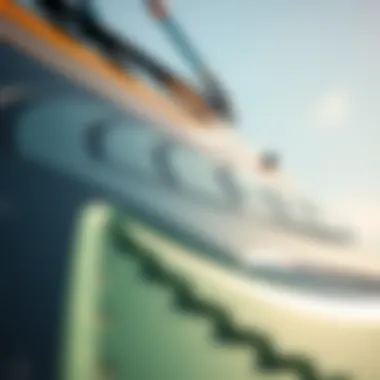
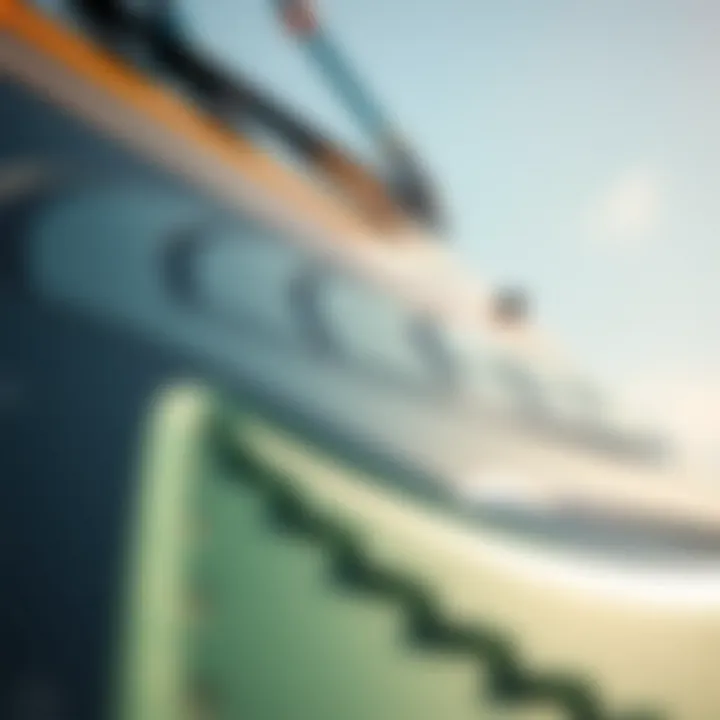
Understanding Cost Structures
The cost structure for wings is multi-layered, encompassing design, materials, manufacturing, and distribution. Each of these components contributes to the final retail price, which can be quite telling about the quality and durability of the product being sold.
- Material Costs: The quality of fabric and components used significantly influences the price. High-performance wings typically utilize lightweight and durable materials like ripstop nylon or specialized polymers. These are less affordable but enhance performance and lifespan.
- Manufacturing Insights: The labor and complexity involved in the manufacturing process also play a vital role. It’s not just about putting pieces together; high-end wings require precision and craftsmanship, which can drive up costs.
- Distribution Factors: Retailer margins and shipping costs can further inflate the selling price. As such, consumers buying from local surf shops versus large online retailers may see discrepancies based on these added costs.
Thus, understanding how these cost structures interact is essential for savvy buyers looking to invest wisely.
Sales Strategies and Discounts
Sales strategies in the wings market vary widely from aggressive promotions to seasonal sales aimed at clearing out inventory. Retailers often implement discount programs to boost turnover during slower months or to introduce newcomers to the sport.
- Loyalty Programs: Some brands have adopted loyalty or referral programs. Returning customers can enjoy discounts on subsequent purchases, while those who refer a friend get bonuses. This approach not only fosters customer loyalty but also drives new business.
- Holiday and Seasonal Sales: Events such as Black Friday or end-of-summer sales help shift large quantities of inventory. Retailers may offer steep discounts during peak seasons or switcheroo seasons to encourage last-minute sales.
- Flash Sales: Spontaneous flash sales online can create urgency—a tactic commonly used in e-commerce that compels immediate purchasing decisions from customers. It’s a win-win, both for the business and those looking for a good deal.
In addition, price matching policies are popular. Retailers often match lower prices from competitors to keep customers from jumping ship. This creates a competitive atmosphere, ensuring buyers receive the best price available.
Overall, navigating the financial landscape when purchasing wings means being aware of these strategies and effectively applying any discounts or programs that may available to maximize value.
Safety Considerations with Wings
The significance of safety in kiteboarding cannot be overstated, especially when it comes to the use of wings. Wings are a relatively new innovation in the world of kiteboarding, offering unique challenges and experiences. Therefore, a keen understanding of safety protocols is essential to ensure enjoyable and secure experiences on the water.
Safety Standards in Wing Production
When it comes to wing design and production, safety standards play a vital role. Manufacturers must adhere to stringent guidelines that typically encompass materials, construction quality, and performance metrics. These standards are not just arbitrary regulations, but crucial measures that protect users from potential hazards.
For example, many top-tier brands like Duotone and Ozone invest heavily in research and development to meet and exceed safety norms set by organizations like ISO (International Organization for Standardization). They conduct rigorous testing to identify possible failure points in real-world scenarios before a wing is made available for sale. This might include endurance testing for material degradation and assessing the structural integrity of the wings under extreme conditions.
Additionally, many producers incorporate safety features into the wings themselves, like self-inflating valves and easy-release systems. These enhancements are designed to facilitate quick descents or to detach from the rider in case of emergencies, minimizing the risk of accidents.
Best Practices for Safe Usage
Even with the highest manufacturing standards, the way you use your wing directly impacts your safety on the water. Riders should start by familiarizing themselves with the specific features and capabilities of their wings prior to hitting the waves. Here are some key considerations to keep in mind:
- Understanding Wind Conditions: Knowledge of wind patterns is crucial. Always assess whether the wind speed and direction are suitable for your skill level and the specific wing you’re using.
- Proper Launching and Landing Techniques: Launching can be a high-risk moment if not done correctly. Always ensure you have a clear area free from obstacles. When landing, do it smoothly to avoid sudden pulls.
- Regular Maintenance: Just like your car, wings need care. Regularly check for tears or defects in the fabric. Ensure lines are untangled and not frayed. Proper storage out of the sun and away from saltwater helps prolong the life of your wing.
- Use of Safety Gear: Donning a good quality harness, helmet, and impact vest can significantly reduce injuries in case of falls or collisions. An experienced rider can provide invaluable tips on managing safety gear.
- Training and Education: It's highly advisable for riders, particularly novices, to take lessons from certified instructors. They can offer the right guidance, not just on how to use the equipment but also on safety norms within the sport.
"Safety isn't just a checkmark; it's the very foundation of every thrilling adventure on the water."
By taking these precautions, riders can fully enjoy the thrill and enjoyment that comes with wings in kiteboarding, while minimizing the risks. It’s all about balancing the excitement with a responsible approach to safety—all crucial elements in the dynamic environment of kiteboarding.
Environmental Impact of Wings Production
In the context of kiteboarding, the environmental impact stemming from wings production is not a trivial matter. As the sport gathers momentum, the demand for wings swells, casting a shadow on the ecological footprint left behind. Understanding this impact is crucial for both enthusiasts and manufacturers alike. Sustainable practices in the production of wings not only serve the environment but also resonate with a growing audience that prioritizes eco-conscious choices. A deeper dive into how wings are manufactured and what materials are utilized can illuminate the path toward reducing environmental harm.
Sustainability in Manufacturing Processes
Manufacturers are increasingly aware of their role in preserving the environment. The concept of sustainability in the production of wings hinges on various factors: raw material sourcing, energy efficiency, and waste management. By applying sustainable practices, manufacturers can significantly reduce their negative impact.
- Raw Material Sourcing: Companies are inclined to source materials that have lower environmental costs. This can mean opting for recycled materials or those that are easily biodegradable. For instance, choosing fabrics that utilize less water during production minimizes strain on water resources.
- Energy Efficiency: Employing renewable energy sources during manufacturing can lower carbon emissions accompanying production. Workshops powered by solar or wind energy can make a remarkable difference.
- Waste Management: Efficient waste processing models can ensure that ragged leftovers from production find a second life rather than languishing in landfills.
All these efforts point toward a conscientious approach, signifying that the kiteboarding community is striving to be better custodians of the planet.
Eco-Friendly Materials and Innovations
The quest for innovation doesn’t stop at changing manufacturing processes; it also leads to the exploration of eco-friendly materials. Many companies are stepping up to incorporate bio-based fabrics or composite materials that not only enhance performance but are also kinder to the environment.
- Biodegradable Fabrics: Some manufacturers are laying the groundwork by using materials derived from natural fibers. This not only reduces the reliance on synthetic fibers but also promotes a circular economy where materials can decompose, reducing overall waste.
- Recycled Plastics: The integration of recycled plastics into wing production offers a practical solution to plastic waste. By transforming discarded materials into new wings, the industry actively helps in minimizing landfill contributions.
"We are all capable of making choices that can protect what we love. By investing in wings made from eco-friendly materials, we're not just enhancing our kiteboarding experience; we're caring for our oceans and our planet."
- Innovative Coatings: Recent advancements have led to the development of eco-friendly coatings that enhance durability without the harmful chemicals traditionally used. These coatings not only ensure longer wing life but also lessen the environmental burden when the product reaches the end of its life cycle.
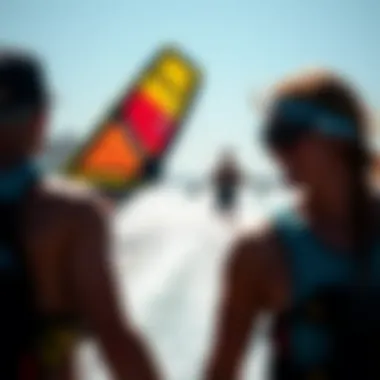
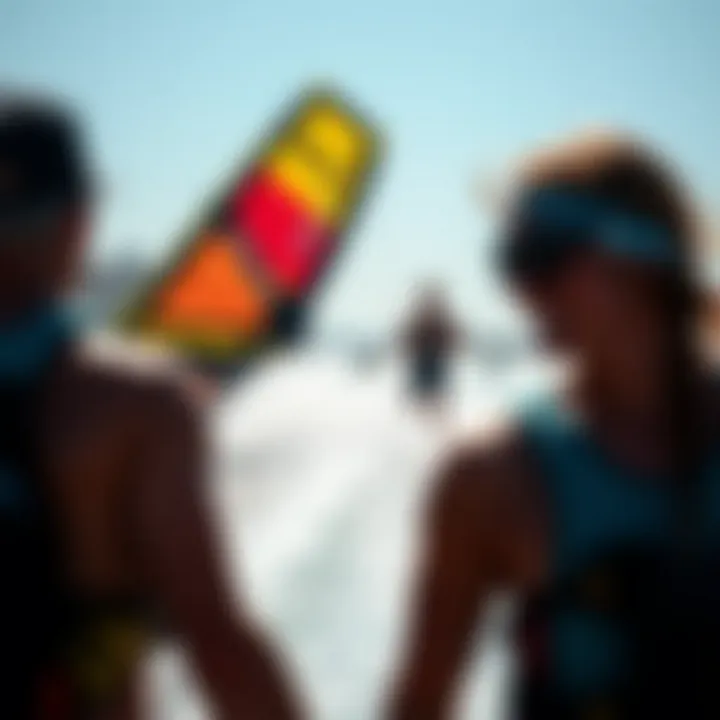
Engaging in these innovations signifies a commitment to evolving the kiteboarding environment while still meeting the diverse needs and preferences of riders. Companies that resist these advancements may find themselves trailing behind as consumers become more discerning about their environmental choices.
Technical Innovations in Wing Design
In the world of kiteboarding, the integration of technology into wing design has been transformative. This section will shed light on the cutting-edge innovations that continue to shape the kiteboarding landscape. Understanding these developments is crucial for enthusiasts and professionals looking to enhance their performance on the water. The advancements seen today not only improve the effectiveness of wings but also address durability, safety, and user experience.
Advancements in Materials and Construction
When discussing the evolution of kiteboarding wings, materials play a pivotal role. Modern wings are increasingly constructed from high-performance fabrics like ripstop nylon or polyester, which are both lightweight and extremely durable. These materials can withstand the unpredictable nature of water sports, offering a balance between flexibility and strength.
In addition to the choice of fabric, seam technology has come a long way. Enhanced stitching methods such as double-stitched seams ensure longevity while also reducing the risk of leaks—an important factor that every kiteboarder must consider. The integration of microfibers and composite materials aids in minimizing weight without compromising on strength, making it easier for riders to maneuver through the air and on water.
“Innovations in materials have made it possible for wings to respond more efficiently to changes in wind and water conditions.”
With the advent of 3D modeling technology, manufacturers can simulate wing dynamics before a physical product is made, ensuring that each design iteration is optimized for performance. This means that riders get a product that’s tailor-fit for high-speed action, sharp turns, and increased lift. The precision of these new designs also helps in maintaining balance—a feature that is paramount for both beginners and seasoned kiteboarders alike.
Performance Enhancements Through Technology
Progress in wing design is not just about better materials; technology is also revolutionizing how these wings perform on the water. The incorporation of software analytics helps manufacturers understand user experiences, leading to a comprehensive mapping of performance metrics such as drag, lift, and stability during rides.
Recent innovations include smart wings that utilize sensors to adjust to environmental shifts in real time. These wings can gauge wind speed and direction, automatically altering shape or tension to maximize efficiency. This means that riders can enjoy a smoother ride, even in less-than-ideal conditions.
Moreover, the emphasis has shifted toward user-friendly features. For example, quick-release systems are designed to facilitate immediate disconnection in case of emergencies, enhancing safety without compromising performance. The introduction of lightweight inflatable designs allows for easier transport and storage, making the experience much more enjoyable.
In summary, the intersection of material science and technology in wing design is shaping the future of kiteboarding, ensuring that participants get the most out of their time on the water. As these innovations continue to evolve, they not only redefine performance standards but also contribute to a safer and more exhilarating kiteboarding experience, acknowledging the diverse needs of various riders—from casual weekend warriors to competition-level experts.
The Future of Wings in Kiteboarding
The wings in kiteboarding are more than just a passing trend; they represent a shift in how enthusiasts interact with the wind and the sea. As technology advances and consumer demands evolve, the future of wings in kiteboarding holds significant promise. This section delves into the anticipated developments in sales and usage, intricately tied to the interests of kiteboarders, instructors, and event organizers. Understanding these shifts can not only enhance one’s kiteboarding experience but also shape how products are marketed across the industry.
Predicted Trends in Sales and Usage
Forecasting the future of wings sales necessitates looking at various market dynamics and lifestyle changes. Increased participation in the sport undoubtedly fuels sales, but the factors driving this trend are multi-faceted:
- Rise in Accessibility: As wings become easier to use, newcomers are more likely to try kiteboarding. This shift in accessibility will likely lead to a robust increase in first-time purchases.
- Technological Developments: Features like improved responsiveness and adaptability in wings can attract seasoned kiteboarders who seek to elevate their skills. As manufacturers innovate, we can expect a corresponding spike in replacement sales as enthusiasts upgrade their gear.
- Social Media Influence: Platforms such as Instagram and TikTok showcase exhilarating wing experiences, sparking interest among non-practitioners. Events and competitions broadcast on these platforms highlight trends, promising to bring new users into the fold.
- Focus on Eco-Friendliness: Consumers are increasingly opting for sustainable products. Brands that explore environmentally friendly materials and manufacturing processes may have a competitive edge, swaying purchasing decisions toward those that prioritize sustainability.
The sum of these elements paints a picture of growth that is not just about numbers, but a community flourishing around the sport. Kiteboarding societies, and meetups will likely pop up more frequently, encouraging people to share tips, experiences, and equipment, thus leveraging collective enthusiasm to foster a larger user base.
Potential Market Challenges Ahead
While the future does seem bright for wings in kiteboarding, it’s prudent to consider the hurdles that may impede this growth:
- Market Saturation: The entry of numerous brands and products means that distinguishing features may blur, driving a potential price war. This situation could harm smaller companies that lack the resources to compete.
- Weather Dependency: The seasonality of kiteboarding can cause fluctuations in sales. In regions with limited ideal wind conditions, businesses may struggle to maintain steady sales throughout the year.
- Training and Safety Issues: As more beginners come into the sport, an increase in accidents can tarnish its reputation. This could lead to stricter regulations and potential market constraints around equipment sales and usage.
The adaptability of wings and their commercialization will become as crucial as skilled instructors for the sustainable growth of kiteboarding.
Addressing these challenges will require collaboration between brands, retailers, and the kiteboarding community to foster safe and engaging sailing practices while promoting comprehensive training programs. Solutions will need to be innovative and responsive to the changing landscape of this vibrant sport.
The future of wings in kiteboarding is thus a delicate dance of technology, awareness, and community engagement. By keeping abreast of emerging trends and remaining adaptable to potential hurdles, stakeholders in the kiteboarding world can contribute to an enduring legacy for the sport.
Culmination
Summarizing the findings in this article is crucial, as it allows the reader to grasp the key aspects of the wings sale phenomenon within the kiteboarding market. Throughout the sections discussed, the significant factors contributing to the growth and evolution of wings were highlighted. Understanding these elements not only aids consumers in making informed decisions but also sets the stage for future developments in the industry.
Recapitulating Key Points is essential in connecting the dots of the various discussions. From the current landscape of wing sales to the importance of safety standards and sustainable practices, each segment plays a pivotal role in how enthusiasts perceive and interact with this sport. Kiteboarding is not just a pastime; it’s a lifestyle that demands respect for safety, environmental considerations, and the technological advancements surrounding wing design.
Moreover, the visibility of market trends and consumer preferences gives crucial insights into the behaviors and buying patterns of kiteboarders. With data suggesting a rise in wings being a preferred choice over traditional kites, it's evident that both novices and seasoned riders are seeking more versatile options.
The Ever-Evolving Kiteboarding Landscape
Reflecting on how kiteboarding is changing, one must recognize the critical impacts of ongoing innovations in wing technology and market dynamics. The kiteboarding scene is not stagnant; it morphs rapidly as new designs emerge and consumer demands shift. The introduction of lightweight materials and advanced engineering techniques have revolutionized user experience, elevating performance in ways that were once unimaginable. New kiteboarding experiences cater to various styles—from freestyle to downwind racing—making the sport inclusive to a wider audience.
"Success in kiteboarding lies not just in the wind but in the wings that carry us through it."
By remaining informed about these dynamics, enthusiasts can better ride the waves of this exciting industry, making the most of their kiteboarding adventures!
For further reading on kiteboarding trends, the following resources may be helpful:
- Wikipedia on Kiteboarding
- Britannica's Overview of Kitesports
- Kiteboarding and Environmental Concerns Discussion on Reddit
- Safety Standards and Guidelines
- Kiteboarding Groups on Facebook for Community Insights















